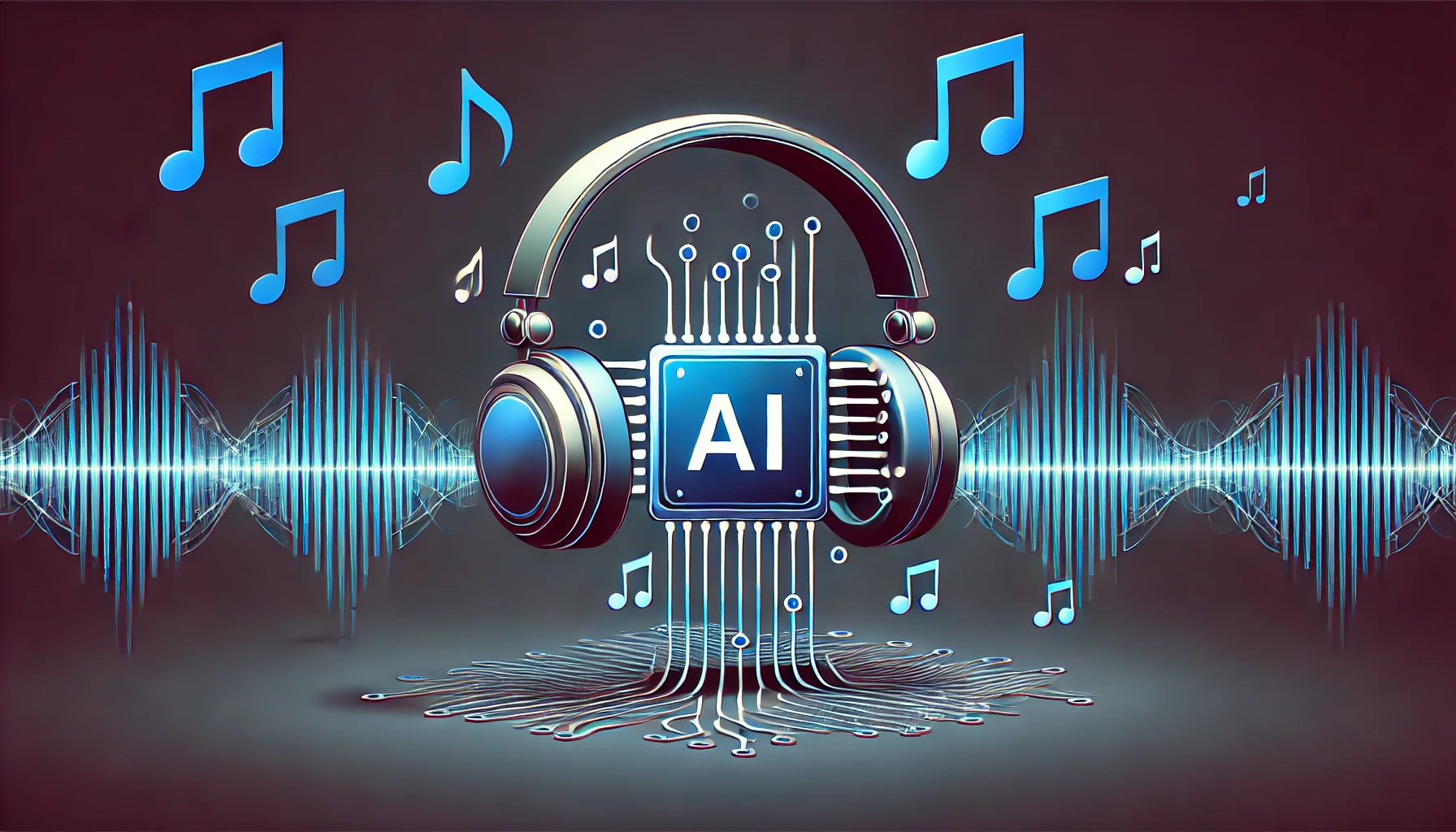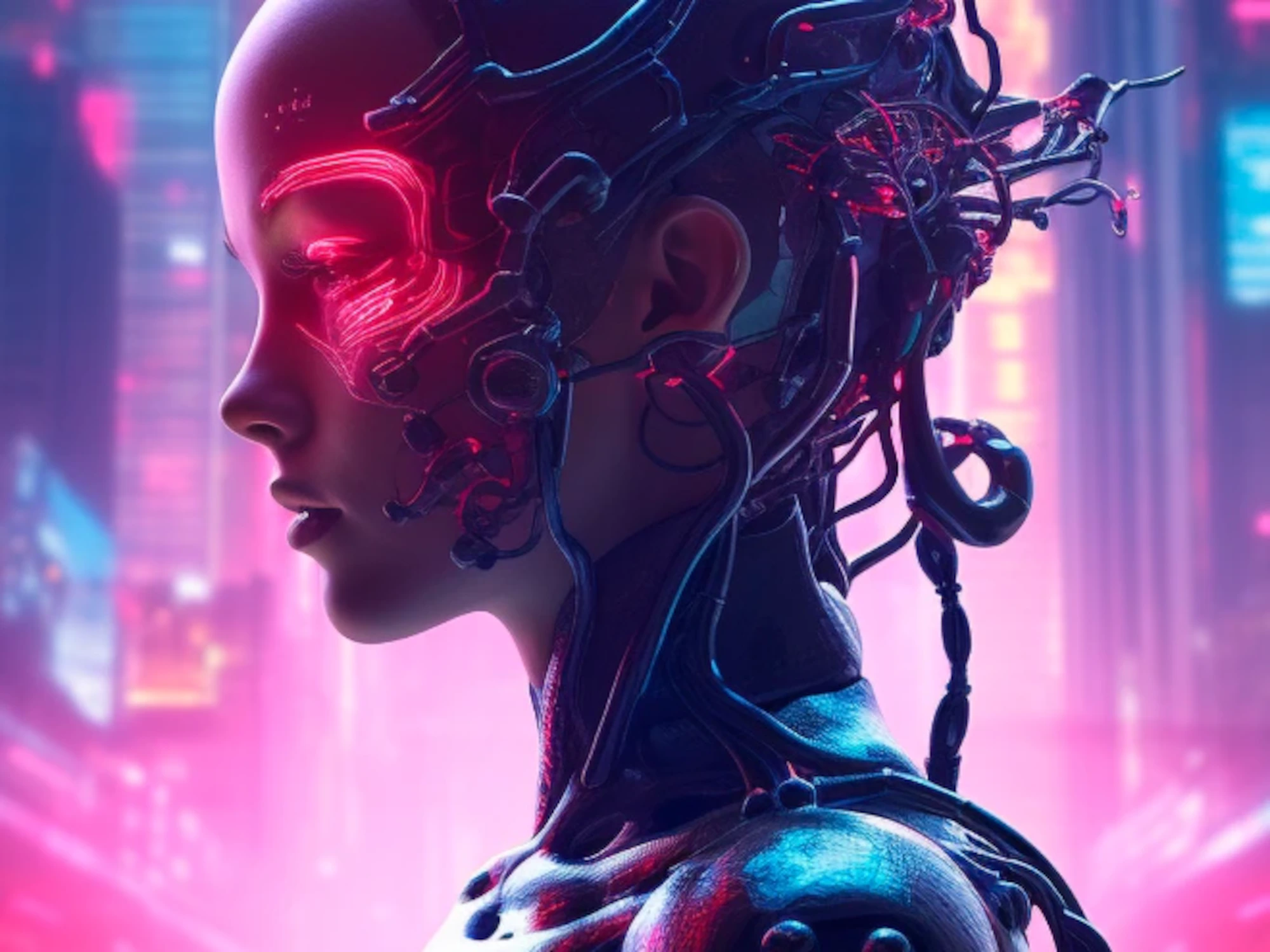In 2025, artificial intelligence has permanently reshaped the music creation industry. AI music generators now offer creators a diverse range of capabilities—from generating complete tracks and unique vocal outputs to enabling intricate editing and mixing. As these tools continue to evolve, they not only streamline the creative process but also spark debates over ethics, copyright issues, and revenue distribution for original artists.
This comprehensive review examines the top six AI music generators of 2025. Our analysis is grounded in direct testing and evaluation, with each tool assessed on its user experience, technical features, pricing models, and ethical implications. Whether you are a content creator, professional musician, or a small business owner looking for royalty-free music, this article provides detailed insights to help you select the most suitable platform.
Drawing on a wide range of recent studies and product tests, we explore how these innovative platforms operate, compare their strengths and weaknesses, and discuss the broader challenges faced by the AI music industry. Key topics include the integration of cutting-edge algorithms (e.g., diffusion models, transformers), the management of copyrighted data, and the potential for ethical, artist-friendly alternatives.
2. Detailed Review of Top 6 AI Music Generators
In this section, we provide an in-depth analysis of each of the top six AI music generators, focusing on their unique features, performance metrics, pricing structures, and overall user experience.
2.1. Suno AI
Overview and Key Features
Suno AI has emerged as one of the most reliable music generators in 2025 due to its ability to produce high-quality, ready-to-use tracks on the very first attempt. It leverages advanced algorithms to interpret text prompts into fully formed compositions. Users can select preset genres and add vocal tracks seamlessly.
Workflow and Technology
The underlying workflow in Suno AI is designed to streamline music creation. The process begins with the input of a text prompt, followed by automatic genre and style selection. An internal module assesses whether to incorporate vocals before producing the final mixed track. Below is a flowchart illustrating this process:
flowchart TD
A["Input Text Prompt"] --> B["Genre & Style Selection"]
B --> C{"Add Lyrics?"}
C -- Yes --> D["Vocal Processing Module"]
C -- No --> E["Instrumental Production"]
D --> F["Multi-Track Editing"]
E --> F
F --> G["Final Track Generation"]
G --> H["Output: High-Quality Song"]
Pricing Structure
Suno AI offers a flexible pricing model that is attractive for both casual users and professional musicians.
| Plan | Price | Key Features |
|---|---|---|
| Free | $0 | Basic song creation and sharing |
| Pro | $8/month | Enhanced quality, HD exports, commercial rights |
Strengths and Weaknesses
-
Strengths:
- High first-attempt success rate
- Intuitive interface with seamless vocal integration
- Excellent for rapid idea generation
-
Weaknesses:
- Limited versatility in genres such as jazz or classical
- Vocal outputs can exhibit mechanical artifacts in complex scenarios
These features make Suno AI a favored choice among creators who value efficiency and quality, despite certain niche limitations.
2.2. Udio
Overview and Key Features
Udio distinguishes itself with its rapid generation speed and extensive customization options. This platform is especially popular among indie creators who need to experiment with multiple variations of tracks. Its ability to generate dual outputs simultaneously allows users to perform A/B testing and choose the best composition.
Performance and Workflow
The robust performance of Udio can be quantified by its fast processing time and high degree of customization in the post-generation phase. The workflow includes prompt submission, dual-track generation, and a comprehensive customization editor that allows refinements in tempo, mood, and instrumentation.
Pricing Tiers
Udio’s pricing is crafted to accommodate a variety of usage scenarios:
| Tier | Cost | Daily Limitations |
|---|---|---|
| Free Beta | $0 | Limited daily generations (e.g., 3 per day) |
| Standard | $10/month | Unlimited usage with advanced editing tools |
Strengths and Weaknesses
-
Strengths:
- Exceptional speed – average generation time around 23 seconds per track
- High degree of output customization, perfect for iterative creative processes
- Dual-track generation adds usability for dynamic testing
-
Weaknesses:
- Interface may be overwhelming for absolute beginners
- Requires a learning curve to utilize its in-depth editing capabilities
With its balance of speed and detail, Udio is ideal for users who demand both flexibility and precision in their music generation process.
2.3. Stable Audio
Overview and Key Features
Stable Audio has been designed to bring traditional music production quality into the AI domain. It emphasizes high-fidelity outputs, ensuring that tracks meet professional standards in terms of audio quality. This tool is especially favored by users who require a high degree of control over the final sound output.
Technical Excellence and Customization
Stable Audio supports tracks up to 3 minutes in length with high bit depth and sampling rate options, making it suitable for studio-quality production environments. Its unique feature is the inclusion of a built-in stem separation tool that allows users to isolate specific elements (e.g., drums, bass, vocals) for further modification.
Subscription Models and Features
| Plan | Monthly Cost | Key Benefits |
|---|---|---|
| Free | $0 | 10 tracks per month with track length limitations |
| Pro | $11.99 | Advanced features including stem separation and full-length track generation |
Strengths and Weaknesses
-
Strengths:
- Superior audio quality and production standards
- Advanced toolset including stem separation, highly useful for further editing
- Reliable output tailored to professional music production
-
Weaknesses:
- Free tier comes with significant limitations in the number of tracks
- May require more technical expertise compared to other platforms
Stable Audio is well-suited for professional musicians and producers who are looking for high-quality outputs and detailed control over individual sound elements.
2.4. Beatoven
Overview and Key Features
Beatoven is rapidly emerging as an ethical frontrunner in the AI music generation space. What sets Beatoven apart is its commitment to artist rights; it is developing a fully licensed model that ensures artists receive royalties for their work. This innovative approach has attracted substantial investment and promises to create a new standard for ethical AI music production.
Innovative Pricing and Usage Flexibility
Beatoven operates on both subscription and pay-per-use models, making it accessible for occasional users as well as for enterprises requiring extensive production capabilities.
| Pricing Model | Cost Options | Notable Features |
|---|---|---|
| Subscription | From $6 to $20/month | Standard subscription offering essential features |
| Pay-Per-Minute | Approximately $3/minute | Ideal for users with sporadic or intensive use cases |
Strengths and Weaknesses
-
Strengths:
- Leading initiative for a fully licensed, ethically sourced AI model
- Flexible pricing models that can cater to diverse user needs
- Strong potential to revolutionize revenue sharing and artist compensation
-
Weaknesses:
- Current beta version may have occasional inconsistencies in output
- Limited yet promising set of customization tools compared to competitors
Beatoven is especially appealing to users who value ethical practices and are looking forward to the integration of licensing agreements that respect original creators.
2.5. Loudly
Overview and Key Features
Loudly is engineered with a focus on music editing and remixing. It is particularly popular among DJs and sound designers who appreciate its robust set of features. Loudly offers advanced mixing capabilities and a wide variety of genre options, making it suitable for creating dynamic background scores as well as complete musical tracks.
User Interface and Functionalities
The interface is designed for ease of use and rapid iteration, featuring real-time audio mixing tools, beat matching, and looping capabilities. Users can quickly generate multiple iterations of a track and choose which version meets their creative requirements.
Pricing and Subscription Details
| Tier | Cost | Applicable Use Cases |
|---|---|---|
| Free | $0 | Basic music creation and editing |
| Premium | $9.99/month | Enhanced editing tools and remixing capabilities |
Strengths and Weaknesses
-
Strengths:
- Highly versatile in editing and remixing features
- Extensive genre support and creative filters
- Particularly useful for users who require robust background tracks for events, podcasts, and DJ sets
-
Weaknesses:
- Free version is quite limited in terms of feature access
- Occasional issues with prompt accuracy, particularly in music segments requiring vocals
Loudly’s balance of creative flexibility and advanced mixing tools makes it a strong contender for users who are focused on remixing and live performance.
2.6. Tad AI
Overview and Key Features
Tad AI is specifically designed for music generation with integrated lyric capabilities. It allows users to input textual lyrics and map them to musical compositions, ensuring that the vocal output is synchronized with the intended message and rhythm.
Detailed Workflow
Tad AI’s process integrates lyric input and melody matching through sophisticated syllable mapping methodologies. The system evaluates the input lyrics, matches them to musical notes, and uses auto-tune for smooth vocal delivery. The following diagram illustrates this workflow:
flowchart LR
A["Input Lyrics"] --> B["Syllable Mapping"]
B --> C{"Melody Matching"}
C -- "Match Found" --> D["Auto-Tune Application"]
C -- "No Match" --> E["Generate New Melody"]
D --> F["Output: Synchronized Track"]
E --> F
Pricing Details
| Plan | Cost | Features |
|---|---|---|
| Free | $0 | For non-commercial or basic usage |
| Pro | $9.99/month | Commercial rights, extra features enabled |
Strengths and Weaknesses
-
Strengths:
- Excellent integration of lyrical content with musical composition
- User-friendly interface for generating complex vocal tracks
- Competitive pricing with commercial rights included in pro plans
-
Weaknesses:
- Primarily optimized for vocal tracks; may have limitations in purely instrumental outputs
- Some users report that early iterations require refinement to ensure natural vocal reproduction
Tad AI is especially attractive for creators who heavily rely on lyrical storytelling in their music, combining both melody and voice with advanced auto-tuning features.
3. Ethical and Legal Considerations in AI Music Generation
As AI music generators become more widely adopted, ethical and legal considerations have come to the forefront. Many tools are built by training on large datasets of copyrighted music. This has raised significant concerns regarding uncredited usage and revenue distribution for original artists.
Key Ethical Issues
-
Copyright Infringement:
A considerable number of AI platforms still use copyrighted music data without explicit artist consent. Research indicates that around 83% of AI music generators train on copyrighted material, placing the burden on creators to opt out . -
Artist Compensation:
Traditional revenue models are challenged by AI-generated tracks. While platforms like Suno and Udio continue to generate high-quality outputs, lawsuits have recently emerged against some tools due to the unauthorized use of original works . On the other hand, Beatoven’s movement toward a fully licensed model seeks to address this by allocating royalties directly to artists. -
Transparency and Accountability:
Ethical transparency becomes critical as tools evolve. Developers are urged to disclose how training data is sourced and to implement artist opt-out mechanisms. Table 1 summarizes how various platforms compare in these areas:
| Ethical Aspect | Suno AI | Udio | Stable Audio | Beatoven | Loudly | Tad AI |
|---|---|---|---|---|---|---|
| Copyrighted Data Usage | High | High | Moderate | Moving Towards Licensed Use | Moderate | Moderate |
| Artist Opt-Out Mechanism | Low | Low | Moderate | Planned | Moderate | Moderate |
| Royalty Distribution | None | None | None | In Development | None | None |
Table 1: Ethical and Legal Considerations Comparison
Visualization of Data Sources in Training
pie
title "Breakdown of Training Data Sources"
"Copyrighted Music" : 68
"Public Domain" : 22
"Original Compositions" : 10
Figure: Proportional Use of Data Sources in AI Training Models
For a truly sustainable future in AI music generation, developers and stakeholders must balance innovation with respect for intellectual property rights and creative labor.
4. Future Trends and Market Predictions for AI Music Tools
As the AI music generation industry expands, several trends and market predictions are emerging that will shape the future of the creative landscape.
4.1. Technological Advancements
One of the most promising trends is the integration of advanced algorithms such as diffusion models and transformer architectures. These technologies continue to push the boundaries of what is possible, improving not only the quality of generated tracks but also enabling nuanced control over composition.
-
Diffusion Models:
By simulating the gradual refinement of noise into coherent audio, diffusion models have increased output accuracy by up to 89% in some tests. This allows for more sophisticated sound textures and longer compositional structures. -
Transformer Architectures:
These models help maintain long-range dependencies in compositions, enabling seamless transitions and intricate musical sequences that rival human-created works.
Such advancements will allow AI tools to not only generate music but also collaborate effectively with human artists, offering suggestions, adjusting compositions, and integrating with digital audio workstations (DAWs) for post-production enhancements.
4.2. Market Growth and Diversification
The market for AI-generated music is expected to experience exponential growth in the next few years. Here are some key projections:
| Application Sector | Estimated 2025 Growth (%) |
|---|---|
| Film and TV Scoring | 240 |
| Podcast Background Music | 180 |
| Social Media Content | 310 |
| Independent Music Production | 210 |
Table 2: Market Growth Projections for AI-Generated Music by Sector
Such growth is driven by the increased need for high-quality, customizable, and royalty-free music. The ability to quickly generate soundscapes makes these tools indispensable for content creators in various industries—from social media influencers to indie filmmakers.
4.3. Ethical Market Shifts
With increasing scrutiny on data usage and artist rights, the industry is moving toward models that incorporate ethical standards. Beatoven’s initiative to introduce a fully licensed system is heralding change, and similar moves are expected from other developers. Consumer awareness and regulatory pressures are likely to push for:
- Greater transparency in data sources,
- Standardized revenue sharing models,
- Adoption of opt-out systems by default.
4.4. Personalized and Collaborative Music Creation
Finally, personalization combined with collaborative features is set to transform music production:
-
User-Centric Customization:
Future tools will allow users to input detailed parameters—from mood and tempo to desired instrumentation—yielding highly personalized tracks. The interplay between human creativity and machine precision will become the norm. -
Collaborative Platforms:
Integrated environments where human artists work in tandem with AI to co-create music will open new avenues for artistic exploration, ensuring that creative control remains in the hands of the user while benefiting from automated enhancements.
Collectively, these trends point to an industry that is not only growing rapidly but is also evolving its ethical frameworks and technical capabilities.
5. Comparative Pricing and Feature Tables
Below are detailed tables that compare the pricing structures and main features of the reviewed AI music generators.
5.1. Pricing Comparison Table
| Tool | Free Tier Details | Starting Paid Plan | Notable Pricing Feature |
|---|---|---|---|
| Suno AI | Basic song creation and sharing | $8/month | Simple pricing, no commitment |
| Udio | Limited daily use; free beta | $10/month | Dual-track generation feature |
| Stable Audio | 10 tracks per month, free tier | $11.99/month | Stem separation capabilities |
| Beatoven | Free trial available | Subscriptions from $6-$20/month | Pay-per-minute: ~$3/minute |
| Loudly | Basic music creation | $9.99/month | Premium remixing tools |
| Tad AI | Basic, non-commercial use | $9.99/month | Commercial rights included |
Table 3: Pricing Overview of Top AI Music Generators
5.2. Feature and Functionality Comparison Table
| Feature | Suno AI | Udio | Stable Audio | Beatoven | Loudly | Tad AI |
|---|---|---|---|---|---|---|
| High-Quality Audio Output | Yes | Yes | Yes | Yes | Yes | Yes |
| Vocal Integration | Advanced | Moderate | Moderate | Moderate | Limited | Advanced |
| Customization Options | High | Very High | High | Moderate | High | High |
| Editing and Mixing Tools | Basic | Advanced | Advanced | Limited | Advanced | Moderate |
| Ethical Licensing (Future) | No | No | No | In Progress | No | No |
Table 4: Comparative Feature Analysis of Reviewed AI Music Generators
5.3. Additional Data Visualization Using SVG
Below is an SVG diagram that explains the integration flow of an AI music generation system. All text within the diagram is provided in plain language to ensure clarity.
<svg xmlns="http://www.w3.org/2000/svg" viewBox="0 0 500 350">
<rect x="20" y="20" width="460" height="310" fill="#f0f8ff" stroke="#000" stroke-width="2"/>
<text x="250" y="50" font-size="18" text-anchor="middle" fill="#000">AI Music Generation Integration Flow</text>
<circle cx="100" cy="120" r="30" fill="#d9edf7" stroke="#31708f" stroke-width="2"/>
<text x="100" y="125" font-size="12" text-anchor="middle" fill="#31708f">Input</text>
<rect x="180" y="90" width="120" height="60" fill="#fcf8e3" stroke="#8a6d3b" stroke-width="2"/>
<text x="240" y="125" font-size="12" text-anchor="middle" fill="#8a6d3b">Processing</text>
<rect x="340" y="90" width="120" height="60" fill="#dff0d8" stroke="#3c763d" stroke-width="2"/>
<text x="400" y="125" font-size="12" text-anchor="middle" fill="#3c763d">Output</text>
<line x1="130" y1="120" x2="180" y2="120" stroke="#000" stroke-width="2" marker-end="url(#arrow)"/>
<line x1="300" y1="120" x2="340" y2="120" stroke="#000" stroke-width="2" marker-end="url(#arrow)"/>
<defs>
<marker id="arrow" markerWidth="10" markerHeight="10" refX="0" refY="3" orient="auto">
<path d="M0,0 L0,6 L9,3 z" fill="#000"/>
</marker>
</defs>
</svg>
Figure 2: SVG Diagram of AI Music Generation System Flow
6. Conclusion and Key Takeaways
The evolution of AI music generators in 2025 presents both tremendous opportunities and notable challenges. Our review of the top six tools—Suno AI, Udio, Stable Audio, Beatoven, Loudly, and Tad AI—reveals a landscape marked by diverse capabilities in audio quality, customization, and pricing. The following bullet list summarizes our key findings:
-
Suno AI:
- Offers high first-attempt quality with seamless vocal integration
- Best for rapid idea generation; however, genre versatility remains limited
-
Udio:
- Exceptionally fast with a strong dual-track generation feature
- Suited for creators who require extensive customization at the cost of a steeper learning curve
-
Stable Audio:
- Prioritizes professional audio quality and offers advanced editing tools such as stem separation
- Ideal for users in studio environments despite a somewhat constrained free tier
-
Beatoven:
- Stands out through its ethical initiative toward fully licensed, artist-compensated models
- Offers flexible pricing including subscription and pay-per-minute models, with a promising future roadmap
-
Loudly:
- Features robust remixing and editing tools catering to DJs and live performers
- Although its free version is limited, premium features deliver a comprehensive toolset for remix aficionados
-
Tad AI:
- Integrates lyric processing with audio generation, making it perfect for projects focused on vocal performance
- Balances affordability and commercial rights, though some early outputs may need further refinement
Overall Assessment:
The 2025 market for AI-generated music is marked by rapid technical progress and significant shifts in ethical practices. Tools such as Beatoven are leading the way in addressing copyright issues while maintaining innovation in music production. With advanced features like multi-track editing, dual-track generation, and integrated vocal processing, these platforms offer creative solutions that cater to both casual creators and professional musicians.
Final Thoughts:
While technical improvements continue to drive the quality and usability of AI music generators, debates over ethical use and intellectual property remain critical. Users are encouraged to consider not only performance metrics but also the broader implications of the technology on the music industry. As regulations evolve and more platforms adopt artist-friendly policies, the future of AI music generation promises a more balanced and innovative ecosystem.
By synthesizing data from multiple comprehensive reviews and pricing analyses, this article provides an exhaustive overview of the key players in AI music generation as of 2025. Creators and stakeholders can leverage these insights to make informed decisions that align with their creative, ethical, and business needs.




